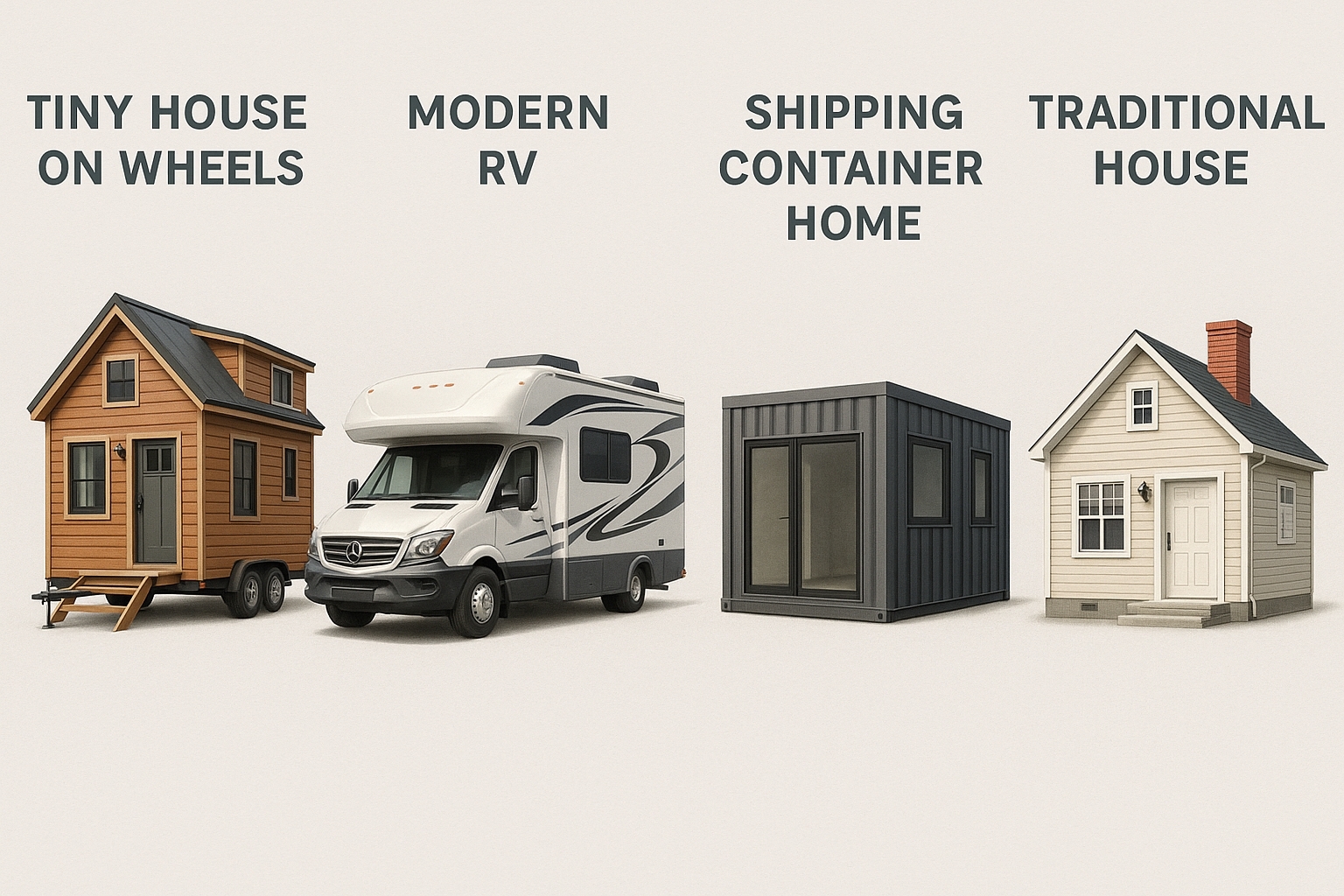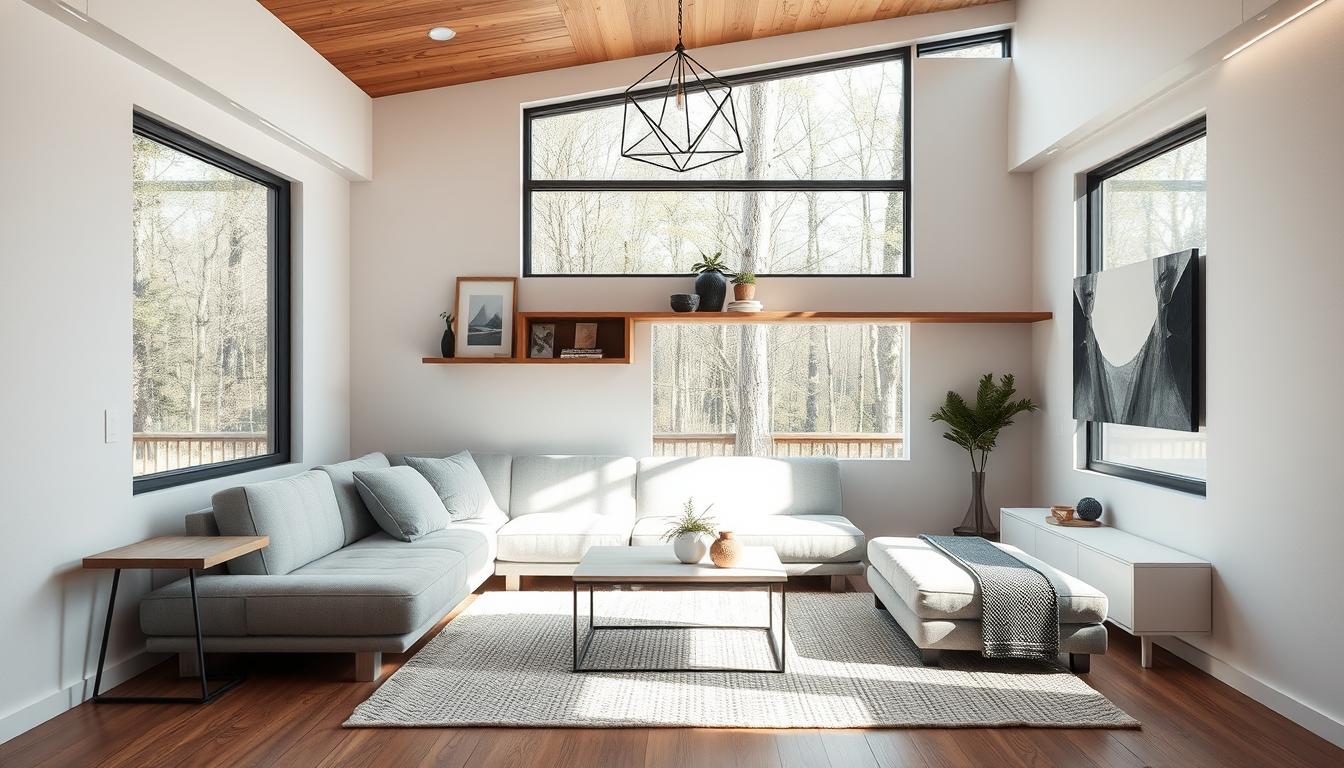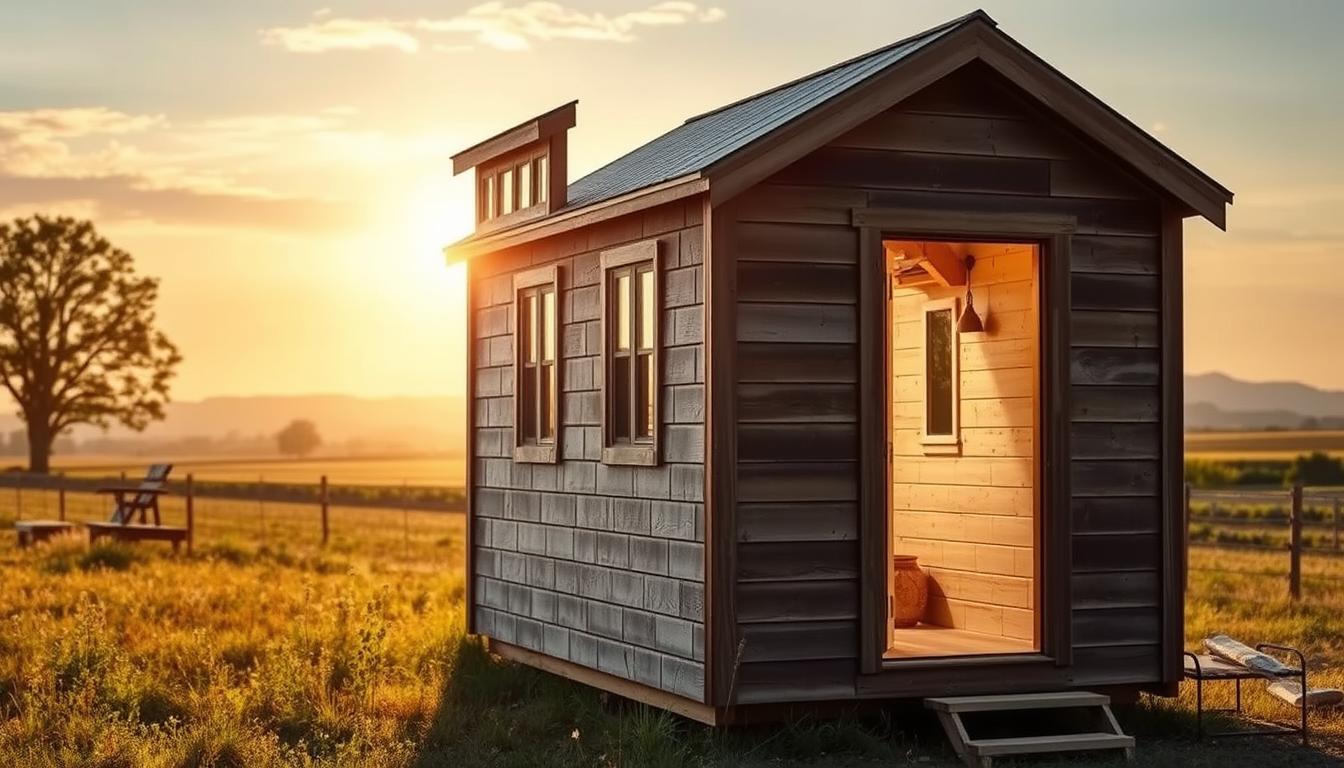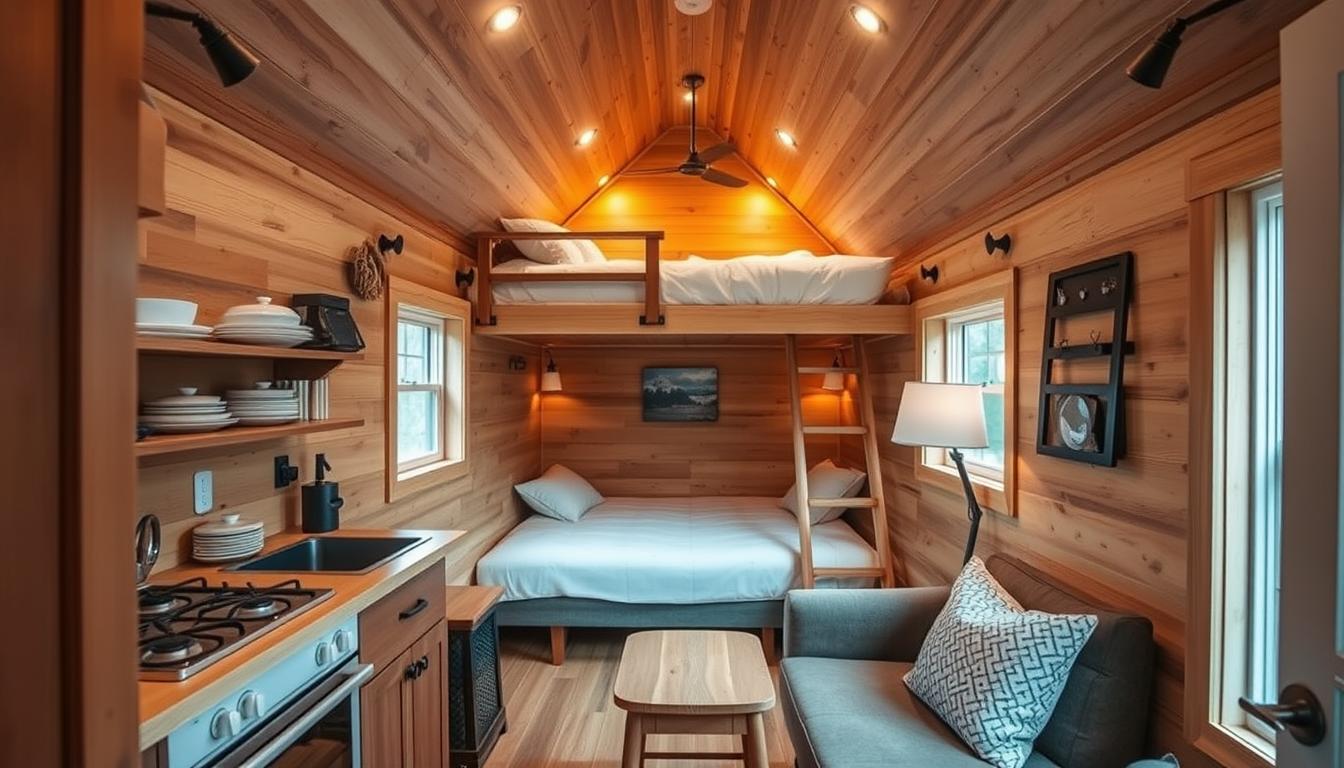Are you interested in downsizing and living a more sustainable lifestyle? Renting land for a tiny house could be the perfect solution for you. In this ultimate guide, we will discuss the benefits of tiny house land rent, how to find land to rent, legal considerations, budgeting, building relationships with landowners, and tips for living on tiny house land.

Benefits of Tiny House Land Renting
Renting land for a tiny house offers several benefits, including affordability, flexibility, environmental sustainability, and community building.
Affordability and Flexibility
Tiny house land rent is often more affordable than traditional home ownership or even apartment living. By renting land, tiny house owners can avoid the cost of purchasing land or a home, and the ongoing expenses of property taxes and maintenance. Additionally, renting land offers more flexibility than buying, as tiny house owners can pick up and move their homes if they desire a change of scenery.
Environmental Sustainability
Tiny house living is inherently more sustainable than traditional living, as it requires fewer resources and produces less waste. By renting land, tiny house owners can further reduce their environmental impact by living in harmony with the natural world. Many tiny house communities encourage sustainable practices like composting, rainwater harvesting, and renewable energy sources like solar and wind power.
Community Building and Social Connections
Living in a tiny house community offers the opportunity to build strong social connections and a sense of community. Tiny house land rent encourages people to come together and share resources, skills, and experiences. Many tiny house communities organize events like potlucks, workshops, and outdoor activities, fostering a sense of belonging and camaraderie among residents.
Ultimate Guide to Tiny House Land Renting
- Tiny house land renting offers affordability, flexibility, and sustainability.
- Finding tiny house land rentals can be done through online platforms, real estate agents, co-housing projects, and communities.
- Legal considerations, budgeting, building relationships with landowners, and challenges of living on tiny house land are also discussed in the guide.

Finding Tiny House Land for Rent
Finding land to rent for a tiny house can be challenging, but there are several strategies that can make the process easier.
Online Platforms for Finding Tiny House Land Rentals
The internet is a valuable resource for finding tiny house land for rent. There are several websites and online forums dedicated to connecting tiny house owners with landowners who are willing to rent out their property. Some popular platforms include Tiny House Listings, Try It Tiny, and Craigslist.
Contacting Local Real Estate Agents
Local real estate agents may be able to help you find land to rent for your tiny house. While traditional real estate listings may not include tiny house-friendly properties, agents may be able to connect you with landowners who are willing to rent out their land specifically for tiny homes.
Working with Tiny House Communities or Co-Housing Projects
Joining a tiny house community or co-housing project can be a great way to find land to rent. These communities often have established relationships with landowners who are willing to rent out their property to tiny house owners. Additionally, living in a community offers the benefits of shared resources, support, and social connections.
Discussing the Importance of Location
When looking for land to rent for a tiny house, location is key. Consider factors like proximity to work, family, and friends, as well as access to resources like grocery stores, healthcare, and recreational activities. Additionally, consider the climate and terrain of the area, as well as any zoning laws or building codes that may affect your ability to place a tiny home on the land.

Legal Considerations for Tiny House Land Renting
When renting land for a tiny house, it is important to consider the legal implications. Here are a few key factors to keep in mind:
Zoning Laws and Building Codes
Before renting land for a tiny house, it is important to research the local zoning laws and building codes. Many areas require a minimum square footage for homes, which can make it difficult to place a tiny home on the land. Additionally, some areas may prohibit tiny homes altogether. Be sure to do your research and ensure that you are in compliance with all relevant laws and regulations.
Lease Agreements and Contracts
Renting land for a tiny house requires a lease agreement or contract with the landowner. It is important to carefully review and understand the terms of the agreement before signing. Be sure to clarify details like rent payments, utilities, and maintenance responsibilities.
Permits and Licenses Required
Depending on the location of the land, there may be permits or licenses required to place a tiny home on the property. Be sure to research and obtain any necessary permits or licenses before moving in.
Discussing the Importance of Following the Law to Avoid Legal Issues and Eviction
Following all relevant laws and regulations is essential when renting land for a tiny house. Failure to comply can result in legal issues and even eviction. It is important to understand and respect the laws of the area and work with the landowner to ensure that you are in compliance.

Budgeting for Tiny House Land Renting
| Factor | Description |
|---|---|
| Design | Consider the design of the tiny house, including size, layout, and functionality. Look for inspiration online and consider working with a professional designer to create a custom plan that meets your needs. |
| Materials | Selecting high-quality, sustainable materials is essential when building a tiny home. Look for eco-friendly options like reclaimed wood, bamboo, and recycled materials. |
| Construction | Building a tiny home requires careful planning and attention to detail. Consider working with a professional builder or contractor to ensure that your home is structurally sound and built to code. |
| Interior Design | Maximizing space and functionality is key when designing the interior of a tiny home. Consider multi-functional furniture, like fold-out tables and hidden storage, and utilize vertical space. |
| Off-Grid Systems | Many tiny house owners choose to live off the grid, which requires self-sufficiency in terms of energy and water. Consider renewable energy sources like solar and wind power, and plan for water storage and filtration. |
| Appliances | Selecting energy-efficient appliances is essential when living in a tiny home. Look for options that are small in size but still offer the functionality you need, like compact refrigerators and stovetops. |
Renting land for a tiny house offers significant cost savings compared to traditional home ownership or apartment living. However, there are still costs to consider. Here are a few factors to keep in mind when budgeting for tiny house land rent:
Cost Comparison of Buying Land vs Renting Land
When considering whether to rent or buy land for a tiny house, it is important to consider the upfront costs of purchasing land. While buying land may offer long-term savings, the upfront costs can be prohibitive. Renting land offers more flexibility and fewer upfront costs.
Monthly Rent and Utilities Costs
The monthly rent for tiny house land rent varies depending on location, but it is generally more affordable than traditional home ownership or apartment living. Additionally, utilities costs may be lower for tiny homes, as they require less energy to heat and cool.
Hidden Costs and Additional Expenses to Consider
When budgeting for tiny house land rent, it is important to consider any hidden costs and additional expenses. These may include maintenance costs, transportation costs if you plan to move your home frequently, and the cost of any necessary permits or licenses.
Discussing the Importance of Budgeting and Financial Planning
Budgeting and financial planning are essential when renting land for a tiny house. Be sure to factor in all costs and create a realistic budget. Additionally, consider saving for unexpected expenses, like repairs or maintenance.
Building a Relationship with Tiny House Landowners
Maintaining a positive relationship with the landowner is essential when renting land for a tiny house. Here are a few tips for building a strong relationship:
Maintaining Open Communication with Landowners
Regular communication with the landowner is key to building a positive relationship. Be sure to keep them informed of any changes or issues and maintain open lines of communication.
Respecting the Land and the Community
Respecting the land and the community is essential when living in a tiny house. Be sure to follow all relevant laws and regulations, keep the property clean and well-maintained, and be a good neighbor.
Participating in Local Events and Activities
Participating in local events and activities can help build a sense of community and support among residents. Attend community events, volunteer, and participate in shared activities to build relationships with your neighbors.
How to Build Trust and Respect Within the Community
Building trust and respect within the community takes time and effort. Be sure to be honest, reliable, and respectful in your interactions with others. Offer to help when needed, and be willing to listen and learn from others.
Challenges and Tips for Living on Tiny House Land
Living on tiny house land comes with its own unique set of challenges. Here are a few tips for overcoming common challenges:
Limited Space and Storage
Living in a tiny home requires creative solutions for storage and organization. Consider multi-functional furniture, like beds with built-in storage, and utilize vertical space.
Off-Grid Living and Self-Sufficiency
Many tiny house owners choose to live off the grid, which requires self-sufficiency in terms of energy and water. Consider renewable energy sources like solar and wind power, and plan for water storage and filtration.
Coping with Changing Weather Conditions
Living in a tiny house requires preparation for changing weather conditions. Be sure to insulate your home well, and plan for heating and cooling needs. Additionally, plan for extreme weather events, like hurricanes or snowstorms.
Offering Solutions and Tips to Common Challenges
When living on tiny house land, it is important to share tips and solutions with others in the community. Attend workshops and events, and be willing to share your own experiences and lessons learned.

Popular Locations for Tiny House Living
Tiny house living is growing in popularity across the United States. Here are a few popular locations to consider:
- Pacific Northwest: The mild climate and progressive values of the Pacific Northwest make it a popular destination for tiny house living.
- Colorado: The scenic beauty and outdoor recreation opportunities of Colorado make it an attractive option for tiny house living.
- California: Despite high housing costs, California is home to many thriving tiny house communities.
- Texas: The low cost of living and wide-open spaces of Texas make it a popular location for tiny house living.
Personal Story: Finding My Perfect Tiny House Land Rental
After years of dreaming about owning a tiny house, I finally decided to take the plunge. However, finding the perfect spot to park my tiny house was proving to be a difficult task. I scoured online platforms and contacted local real estate agents, but nothing seemed to work out.
That’s when I stumbled upon a tiny house community that was just starting up. They were looking for like-minded individuals to join their community and rent land. I jumped at the opportunity and soon found myself with the perfect spot to park my tiny house.
Living in a tiny house on rented land has been an incredible experience. Not only is it affordable, but the sense of community and social connections I have made have been invaluable. I have made friends with my fellow tiny house neighbors and we frequently participate in local events and activities together.
Of course, there have been challenges, such as limited space and storage, but I have found creative solutions to these issues. Living off-grid and being self-sufficient has also been a learning curve, but I have enjoyed the process of becoming more environmentally sustainable.
Overall, renting land for my tiny house has allowed me to live a more affordable and sustainable lifestyle, while also being a part of a supportive and welcoming community.
Conclusion
Renting land for a tiny house offers a variety of benefits, including affordability, environmental sustainability, and community building. However, it is important to consider legal considerations, budgeting, and building relationships with landowners. With careful planning and preparation, tiny house living can be a viable and rewarding lifestyle choice.
Questions & Answers
Question: Who can rent land for a tiny house?
Answer: Anyone looking for a place to park their tiny house.
Question: What is the average cost of renting land for a tiny house?
Answer: Prices vary, but expect to pay $200-$800/month.
Question: How do I find land to rent for my tiny house?
Answer: Check out websites like Tiny House Listings and Airbnb.
Question: What are some common challenges in renting tiny house land?
Answer: Zoning laws, building codes, and utilities can be obstacles.
Question: How can I make sure my tiny house is allowed on the rented land?
Answer: Research local zoning laws and building codes beforehand.
Question: What if the landlord raises the rent or sells the land?
Answer: Have a written lease agreement and discuss options with the landlord.
The author of this guide has extensive experience in sustainable living and community building. They earned a degree in Environmental Studies from a top university, where they conducted research on low-impact living and sustainable development. After graduation, they worked for several years at a nonprofit organization that focused on community development and environmental advocacy. During this time, they organized and led workshops on sustainable living practices and worked with local communities to develop affordable housing solutions.
In recent years, the author has become involved in the tiny house movement and has personally lived in a tiny house for over two years. Through their own experiences and research, they have gained a wealth of knowledge about tiny house living, including finding affordable land to rent and navigating legal considerations. Additionally, they have established relationships with other tiny house residents and communities, which has given them insight into the challenges and rewards of living in a tight-knit community. Their passion for sustainable living and community building makes them the perfect guide for those looking to explore tiny house land renting.










